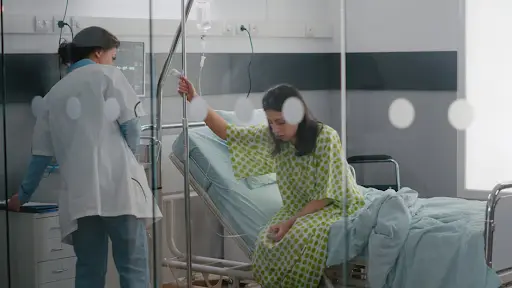
The journey of recovery after spine endoscopy, also known as endoscopic spine surgery, represents a critical phase in an individual’s pursuit of relief and wellness.
This innovative medical procedure offers a minimally invasive approach to address spine-related issues without the necessity of extensive surgeries. However, what follows the surgery carries immense significance in the trajectory toward complete healing and successful rehabilitation. Post-operative care is not merely a set of guidelines; it’s a comprehensive roadmap guiding patients through the maze of recovery towards a life free from constant pain and limitations.
Embracing the guidance provided by healthcare professionals enables individuals to actively shape their recovery journey. By following the prescribed post-operative care guidelines, patients can ensure a smoother transition towards a life devoid of spine- related discomfort and restrictions.

Example: Vidhika diligently adhered to her pain medication schedule post-spine endoscopy, promptly reporting any discomfort. This proactive approach significantly eased her recovery process.
meticulous care. Following the surgeon’s wound care instructions—cleaning
the incision site with mild soap and water, coupled with antibiotic ointment—creates a conducive environment for healing and prevents potential infections.
Example: Sarika’s commitment to maintaining cleanliness and avoiding touching the incision site post-surgery contributed to a seamless healing process, minimizing risks of infection.
prescribed restrictions on physical activities, such as refraining from heavy
lifting or excessive bending, is crucial. Gradually increasing activity levels in
line with the guided rehabilitation program promotes a gradual return to
normal functionality.
Example: Radhika’s adherence to activity limitations post-surgery, combined with gradual increments as guided, helped her regain strength and flexibility without setbacks.
sleep are vital components. Finding a comfortable sleeping position, possibly
aided by specific pillows or mattresses, supports the spine during the recovery phase.
Example: Satya’s focus on rest and sleep in the initial weeks post-surgery allowed his body to recuperate effectively, aiding the healing process.
Each patient’s personalized journey through recovery holds unique nuances and challenges. Engaging in the directives with diligence, coupled with proactive communication with healthcare providers, opens the door to a future where pain recedes, and freedom of movement reigns.
Conclusion:
The commitment to post-operative care represents an investment in a future where pain loses its grip, and vitality takes center stage. By following these guidelines with dedication, individuals embark on a voyage toward a life less restricted and more vibrant.
The journey through post-operative care following spine endoscopy signifies more than a set of instructions; it’s a pact between patients and their recovery, outlining the path toward a life less hindered by spine-related discomfort. By embracing these guidelines, individuals actively contribute to their healing, shaping a future liberated from continuous pain and constraints.
Post-operative care isn’t a standalone phase but a bridge to a life with renewed Vigor and diminished discomfort. It’s a testament to the human spirit’s resilience and the alliance between medical guidance and patient commitment.